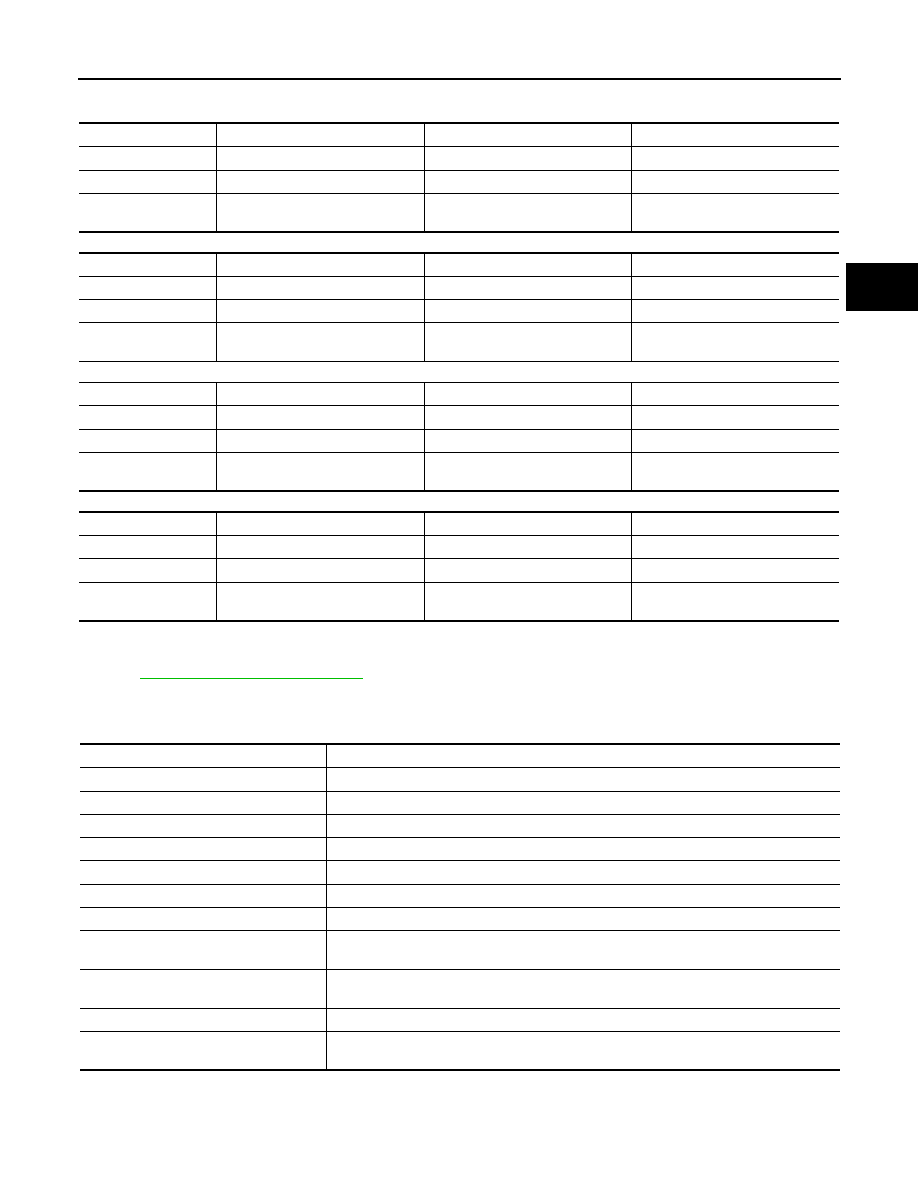Content .. 1856 1857 1858 1859 ..
Infiniti FX35, FX50 (S51). Manual - part 1858

SHIFT MECHANISM
TM-239
< SYSTEM DESCRIPTION >
[7AT: RE7R01B (VK50VE)]
C
E
F
G
H
I
J
K
L
M
A
B
TM
N
O
P
• Each planetary gear enters the state described below.
Front planetary gear
Under drive planetary gear
Rear planetary gear
Mid planetary gear
Component Parts Location
INFOID:0000000005250214
TM-215, "Cross-Sectional View"
.
Component Description
INFOID:0000000005250215
Name
Front sun gear
Front carrier
Front internal gear
Condition
—
Output
Input
Direction of rotation
Counterclockwise revolution
Clockwise revolution
Clockwise revolution
Number of revolutions
Deceleration from front internal
gear
Deceleration from front internal
gear
Same number of revolution as the
input shaft
Name
Under drive sun gear
Under drive carrier
Under drive internal gear
Condition
—
Fixed
Input/Output
Direction of rotation
Counterclockwise revolution
—
Clockwise revolution
Number of revolutions
Acceleration from under drive inter-
nal gear
—
Same number of revolution as the
front carrier
Name
Rear sun gear
Rear carrier
Rear internal gear
Condition
Output
Fixed
Input
Direction of rotation
Counterclockwise revolution
—
Clockwise revolution
Number of revolutions
Acceleration from rear internal
gear
—
Same number of revolution as the
under drive internal gear
Name
Mid sun gear
Mid carrier
Mid internal gear
Condition
Input
Output
Fixed
Direction of rotation
Counterclockwise revolution
Counterclockwise revolution
—
Number of revolutions
Same number of revolution as the
rear sun gear
Deceleration from mid sun gear
—
Name of the Part (Abbreviation)
Function
Front brake (FR/B)
Fastens the under drive carrier.
Input clutch (I/C)
Connects the mid internal gear and the rear carrier.
Direct clutch (D/C)
Connects the rear carrier and the rear sun gear.
High and low reverse clutch (HLR/C)
Connects the rear sun gear and the mid sun gear.
Reverse brake (R/B)
Fastens the rear carrier.
Low brake (L/B)
Fastens the mid sun gear.
2346 brake (2346/B)
Fastens the under drive sun gear.
1st one-way clutch (1st OWC)
Allows the under drive carrier to turn freely in the forward direction but fastens it for reverse
rotation.
2nd one-way clutch (2nd OWC)
Allows the rear sun gear to turn freely in the forward direction but fastens it for reverse ro-
tation.
Torque converter
Amplifies driving force the engine, and transmits it to transmission input shaft.
Oil pump
Driven by the engine, oil pump supplies oil to torque converter, control valve assembly, and
each lubricating system.